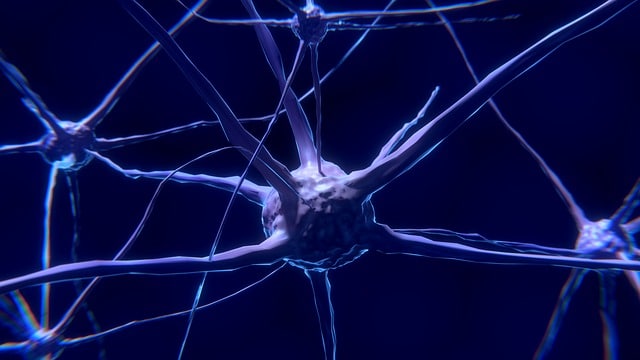The effectiveness of Eye Movement Desensitization and Reprocessing or EMDR in treating trauma is now well known. There is also growing evidence it can treat other conditions like depression and anxiety as well. But what is it specifically about EMDR that makes it such as efficient form of therapy?
One of the major benefits of EMDR is that there is a ripple or flow on effect to any healing of trauma that occurs. In other words, processing a memory with EMDR which belongs to a certain class of experience (such as humiliation or rejection) can have a knock on effect and also process other memories which belong to that class of experience.
You don’t have to work with every single unpleasant experience with EMDR in order for widespread healing to occur. Let’s look at this enormous benefit in more detail.
Contents
The Ripple Effect of EMDR Explained
Experts are not sure of the exact method by which EMDR works. There are several leading hypotheses as to how and why it works which we will cover in another article. However, the “Ripple Effect” we summarised above, where the reprocessing of one memory can automatically lead to the reprocessing of other similar memories, is well known by EMDR practitioners and is one of the many benefits of this form of therapy over others.
This basically means that a client doesn’t have to work with every single traumatic experience they have suffered; they just need to work with the key standout experiences in each class of experience, such as humiliation, being shouted at, physical abuse etc. This will have a flow on effect to all other experiences that belong to that class of experience.
In this sense the client history and preparation stage which make up the formal EMDR process are very important for the client, in building up a list of traumatic memories they want to process and also grouping them into suitable categories in terms of classes of experience. These will obviously vary from person to person. See our article on the 8 steps of EMDR for more details on the full process of EMDR therapy.
However, once the therapist and client have grouped experiences into suitable classes, this means they can target one or a couple of key standout experiences of each category or class, for example bullying, and working on those to completion will by proxy also process other traumatic memories which belong to the same general group.
See the embedded video below by EMDR therapist Dr. James Alexander, where he explains this amazing Ripple Effect of the therapy. This benefit of EMDR cannot be over-emphasized. It is already often faster acting than other forms of therapy in it’s own right in processing each individual memory, but this flow on effect to other unpleasant experiences makes it an even more efficient therapy. Much more baggage and “stuff” can be healed from the past in any given time period than other forms of therapy.
Why Does This Ripple Effect Happen?
Again it is difficult to be 100% sure why EMDR has this Ripple Effect but Dr Alexander provides a logical explanation. It basically has to do with how trauma is stored in the body and more specifically the brain. See the 4 minute 30 mark where he goes into this.
Negative experiences which are in some way traumatic and are not fully processed by the mind/brain actually remain stored within the body. Most especially memories are neurologically stored on brain cells, and similar memories are stored on the same brain cells. They are physiologically related to each other.
The process of EMDR, where a client is tapped in neurologically to unpleasant past experiences, reactivates the same parts of the brain which were activated when the trauma initially happened. Dr Alexander reports that as many as 80% of the neurons which were activated at the time are re-activated when EMDR taps them back into it.

Memories of past events are stored on pathways in the brain, and similar memories are often stored on the same pathways
This represents the physical component of the client’s trauma in terms of memories and emotions stored on brain cells. Once activated then the therapist will use eye movements or some other form of bilateral stimulation, which sparks the brain into action and stimulates it to process the memory in a way it couldn’t be processed at the initial time of the trauma.
Therefore in the process of “digesting” the specific memory being worked on, the EMDR process also automatically processes all other memories and associated emotions which are also stored on the same neurons in the brain. Working on one experience, however unpleasant it may be, can also by proxy work on all other similar experiences.
The Benefits of this Ripple Effect of EMDR
The benefits of this ripple effect are very clear. As Dr Alexander mentions in his videos, the typical rate for processing memories tends to be one traumatic memory per session. Of course it is impossible to generalize and there are variations around this depending on the person and the severity of the experience being worked on.
However even in it’s own right this is a very fast rate of healing compared to other forms of therapy, where progress can be painfully slow and take months or years. Add to this the flow on effect where other physiologically related memories are also processed by working on one standout memory and you see how EMDR truly is a very effective and efficient therapy.
This has multiple implications, firstly for the client. Whilst it is not pleasant to revisit any traumatic experience, at least they only have to revisit one or several key experiences of each category. They don’t have to revisit every single negative experience; working with the key experiences will have a knock effect and process all other experiences stored on the same pathways in the brain.
This makes the EMDR process therapeutic but as efficient as possible. We do not wish to downplay how hard and challenging the process can be. Unfortunately the only way out is through with trauma to some extent under EMDR, in the sense that trauma must be somewhat reactivated, but at least the client doesn’t have to re-experience every single trauma.
The thought of having to do this could put people off even attempting therapy in the first, as the thought of having to go back over every single trauma in their lives would just be overwhelming. With EMDR you don’t have to do this; you just have to be prepared to work to completion with some key standout traumas and you can leave behind all related traumas as well.
The time and cost implications cannot be underestimated as well. Standard talk therapy can take years and cost thousands of pounds or dollars and not be effective for some people in really addressing trauma. EMDR is fast acting and efficient, which can save valuable time and money versus more conventional forms of therapy.
Who Can EMDR (And The Ripple Effect) Help?
Of course we cannot argue that EMDR is a panacea cure for all forms of psychological problems. Some problems may be better helped by other forms of therapy. However, for dealing with trauma EMDR is most definitely the most effective and efficient therapy, to the extent it is the main treatment recommended by the WHO for trauma.
And we define trauma in the widest possible terms – any negative experience a person has suffered in their life that they have struggled to fully process and come to terms with and that still bothers them in some way. This need not just include the obvious forms of PTSD in the forms of war/combat experience or other extreme traumas like car accidents or natural disasters.
The wider definition of trauma can also include just unpleasant life events like bullying, unpleasant breakups and divorces, physical assaults, childhood abuse and so on. There is no reason for anyone “live with” these memories in the sense of being constantly haunted and burdened by them and EMDR is an immensely positive therapy that can help you leave these traumas behind in your life.
Click here for our EMDR Resources page with links to some good books to learn more about EMDR
Click here for resources to find an EMDR Therapist in your area.






